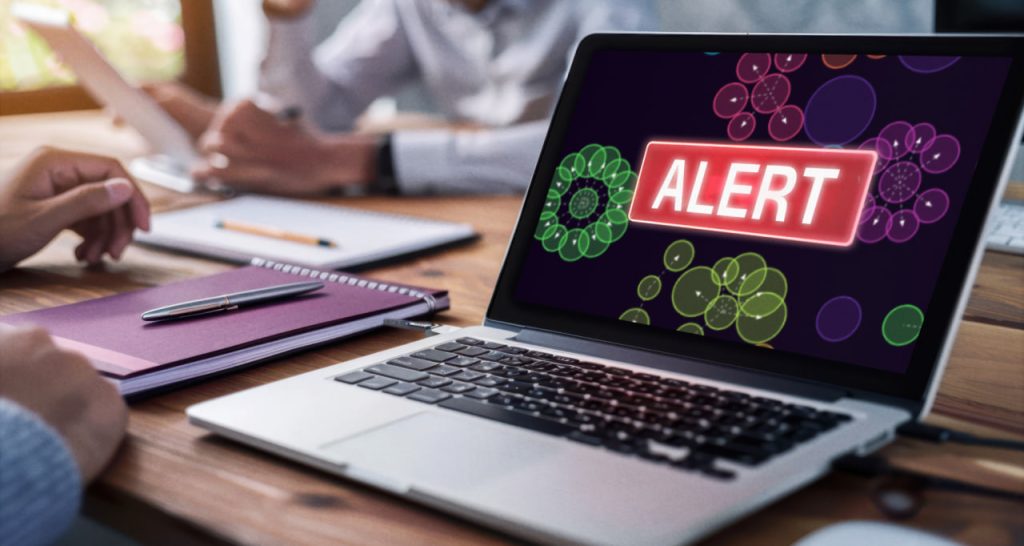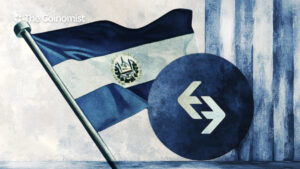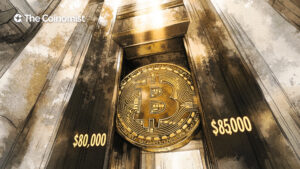A Tool to Spot Crypto Scams: What Is Bubblemaps?

One of the key advantages of public blockchains is transparency. You can analyze data, see how tokens are distributed and what transactions are happening. Bubblemaps is a tool created to simplify crypto research.
On this page
Data from Bubblemaps can help you spot red flags in a project and identify investment risks. In this article, we’ll provide a detailed overview of how this works.
Read on to find out:
- What is Bubblemaps?
- How does the tool identify scams?
- Why did Andrew Tate block Bubblemaps on X?
- How can you use Bubblemaps in your crypto research?
- When was Bubblemaps created and who are its founders?
- Is Bubblemaps a reliable tool to find out scammers?
What Is Bubblemaps?
Bubblemaps is a blockchain analytics and data visualization tool for token supply investigation.
The tool's name is based on the way it represents data. You may have seen graphics that look something like this:
This is a practical way to display information, ideas, and concepts in the form of bubbles and circles.
Bubblemaps used this concept to create a data platform that offers token supply audits through colorful bubbles. These bubbles represent token holders.
Related addresses are linked together in clusters so that users can quickly see and understand how they are connected to one another.
Bubblemaps has 4 rules:
- Each bubble represents a single wallet
- The platform loads the top 150 wallets
- The bigger the size of a bubble, the more tokens the associated address holds
- Two bubbles are connected if there is at least one historical transaction between them
Bubblemaps displays information about wallet IDs, whether they belong to individual users, crypto exchanges, or other entities. By clicking “Show Transfers,” you can see the transaction history of any address.
Perhaps the most decisive metric to watch out for is the cluster percentage. It shows what percentage of the total token supply is held by interconnected wallets within a specific cluster.
If the percentage is too high, it can signal centralization issues, manipulation, or point out a potential scam.
Bubblemaps home page: Source: bubblemaps.io
Analyzing all this data is also possible through blockchain explorers. However, that could be complex and time-consuming, as you'd need to analyze different aspects of the project one by one. Bubblemaps help to make sense of the metrics more easily.
Bubblemaps supports multiple blockchains including Ethereum, BNB Chain, Fantom, Avalanche, Cronos, Arbitrum, Polygon, Base, and Solana. The platform tracks data based on blockchain explorers, DeFi platforms, and data monitoring services, including Etherscan, OpenSea, DEX Screener, and Pump.fun.
New blockchains and platforms may be added to the list over time.
How Can Bubblemaps Reveal Scams?
Bubblemaps displays how tokens are distributed and how different wallets are connected to each other. These are important elements for spotting risky projects and fraud.
Crypto scams like pump-and-dump and rug pulls often involve a small number of wallets that control the majority of the token supply. With most of the supply in their hands, scammers can easily create fake activity and manipulate prices.
Pump and dump schemes, for example, focus on creating hype around a project to attract investors. After a period of active buying, prices crash, allowing fraudsters to make a profit. Rug pulls, on the other hand, involve the team behind the token taking all the investors’ money and disappearing.
In both cases, we’re dealing with supply control.
Data from Bubblemaps can be a key clue in finding connections between wallets that form suspicious patterns. You can click on any token listed on the platform to understand its distribution.
Take a look at the map of the Grimace memecoin scam to see clearly what we’re talking about.
How the token supply of the scam Grimace memecoin looks on Bubblemaps: Source: bubblemaps.io
In August 2024, scammers hacked McDonald’s Instagram account and used it to promote a token they created on the Solana blockchain, leveraging Grimace, a character from the fast food chain's commercials, as the project’s face.
Following the hack, Grimace’s market cap surged to approximately $20 million before plummeting to around $600,000.
Bubblemaps, which identifies unusual signals and shares investigations with users, reported on X that hackers controlled 75% of the Grimace memecoin's total supply. The scammers used multiple addresses to simultaneously purchase Grimace on the memecoin launchpad platform Pump.fun, then distributed the tokens across 100 wallets.
They rug-pulled investors and disappeared, at the end leaving a note on McDonald’s Instagram bio: “Sorry mah n-gga you have just been rug pulled by India_X_Kr3w thank you for the $700,000 in Solana.”
Screenshot of McDonald’s Instagram bio following the hack. Source: Users who captured and shared images on social media.
More recently, on October 2, 2024, Bubblemaps warned investors about the Baby BNB memecoin. According to data from the platform, 80% of the memecoin’s supply is controlled by related wallets.
Around 42% of this amount is owned by a fake DAO, while another treasury wallet holds 40%, belonging to insiders. Bubblemaps noted that despite Baby BNB’s suspicious supply, the memecoin is being promoted by various KOLs (Key Opinion Leaders) on X, including one with the username @notEezzy.
Interestingly, neither Baby BNB nor any of the influencers have replied to Bubblemaps' claims.
You can find many such posts and case studies on Bubblemaps’ official website and their X account. These include not only memecoins but also tech coins and NFTs.
Why Andrew Tate Blocked Bubblemaps on X
The story revolves around the DADDY token, created by social media personality and former kickboxer Andrew Tate.
Celebrity tokens have been a popular memecoin category for a while, but it’s fair to say that not all of them have great tokenomics or achieve success; many of these projects ultimately fail.
Tate launched and started promoting DADDY in June 2024 as a response to rapper Iggy Azalea’s MOTHER token. Tate claimed his goal was to “flip the token for patriarchy.”
Soon after the launch, DADDY’s market cap surpassed $217 million.
Bubblemaps’ investigation followed. The platform shared data on X, revealing that insiders bought 30% of the supply at launch before Tate began promoting his token.
Meanwhile, 40% was airdropped to Tate’s public wallet, which he promised never to sell in a Rumble live stream. Although Tate has stuck to his word, Bubblemaps’ analysis shows that the token’s distribution is controlled in such a way that if one of the large wallets sells, liquidity could crash.
We discovered that 11 wallets were funded through Binance and bought significant amounts of $DADDY supply at a convenient time — just before Daddy TATE CTO, or Andrew Tate, tweeted about it.
the platform wrote.
Not only did the wallets buy at the same time from the same exchange, but they also purchased similar amounts of tokens. Bubblemaps concluded that this pattern suggests these addresses are controlled by the same person.
Tate’s response to the criticism was to block Bubblemaps.
At the end of August 2024, Tate announced another memecoin, THE REAL WORLD (TRW). The token will be used on the learning platform and will reward students.
It’ll be interesting to see how its token economy will work.
Meanwhile, at the time of writing, DADDY is down 59% from it's all-time high of $0.29, which was reached on June 14, 2024.
All this memecoin saga is happening while Andrew Tate and his brother Tristan face charges of human trafficking and sexual abuse involving minors. Andrew Tate remains under house arrest, while Tristan Tate is under special judicial control. Both brothers deny all charges.
How Can You Use Bubblemaps in Your Crypto Research?
Bubblemaps offers users a free version and a premium membership. In the free version, you can see and analyze the maps of listed tokens and NFTs. The advantage of the premium membership is that you can research any token, refresh maps, and access the history.
Membership requires payment in the platform's native token, Moonlight (MOONLIGHT). According to the official website, users need to hold 250 billion tokens, which currently trade at around $0.0000000083.
Aside from the mentioned differences, the core token analytics principles for the free and premium versions are the same. Bubblemaps points out five ways it can help users in their research:
Find connections between wallets: Clicking on a bubble, you can see its ranking based on the number of tokens it holds. Data also shows the percentage of the token supply the address holds and the percentage of the token supply the cluster holds.
See how the wallets interact with each other: Bubblemaps visualizes connections between wallets using dotted lines to represent their interactions. By examining these dots, you can track the direction of transfers. Bubblemaps transforms tactical information into an interactive experience. For example, the map of the Bidget token on Ethereum shows that wallet #7 and wallet #9 shared one transaction, with wallet #9 sending 0.1 ETH to wallet #7.
Bubble map of the Bidget token: Source: bubblemap.io
Decode clusters: Based on the previous information, you can analyze the potential meanings of the connected bubbles. Two wallets might form a cluster due to a genuine transaction between them. However, this could also indicate that a marketing wallet has paid other wallets among the top 150. Alternatively, it may suggest a presale, that the wallets belong to the same person, or that they are related in some other way.
Spot patterns: In the following bubble map of the TURBO token, you can see that the central large wallet is connected to more than 30 wallets in a cluster, representing 40-50% of the total supply. ETH transfers indicate that these wallets sent ETH to the central wallet and received TURBO in return. This is a typical pattern of a presale.
Bubble map of the TURBO token: Source: bubblemap.io
Identify malicious activities: Sometimes, when looking at Bubblemaps, the data itself provides clear reasons why a particular token is risky. This is evident with the Biden Has Left the Chat (BHLTC) memecoin. Its map shows that wallet #111 is connected to 110 wallets, collectively holding 91% of the supply. The central wallet has sent 800-900 tokens to all the bubbles in the cluster.
Bubble map of the BHLTC token: Source: bubblemap.io
These types of clusters are extremely risky and warrant investigation, as they can easily manipulate prices. Larger clusters pose a greater risk since a single individual can significantly impact the price.
Several factors to consider include the proportion of the supply owned by the team, whether the wallets are locked, and if there is significant selling activity.
When using Bubblemaps in your research, remember that clusters do not always indicate attempts to manipulate the market. Other factors may be at play. For instance, wallets can be grouped during airdrop events or for decentralized voting.
When Was Bubblemaps Created and Who Are Its Founders?
Bubblemaps was co-founded in April 2022 in Paris by Nicolas Vaiman, the CEO, and Léo Pons, the CTO. The team launched the platform's native token, Moonlight, about a year before the platform's launch, in April 2021.
Moonlight has a total supply of 1,000,000,000,000,000 (one quadrillion) tokens. It serves as a utility token, providing access to the platform's premium features.
In 2023, Bubblemaps raised approximately $3.2 million (€3 million) in seed funding from various investors, including INCE Capital, Stake Capital, Momentum 6, Lbank, and V3ntures.
Looking ahead, the platform is set to launch its V2 update, with new token listings expected.
FAQ
- What’s the Difference Between Bubblemaps and Blockchain Explorers?
Bubblemaps provides visual representations of wallet connections and token distributions, while blockchain explorers like Etherscan display detailed transaction histories in text format. Bubblemaps is more user-friendly for visualizing relationships, whereas explorers offer more technical data.
- How to Use BubbleMaps to DYOR?
You can use Bubblemaps to DYOR (Do Your Own Research) by clicking the bubbles that represent wallets. The bigger the bubble, the more tokens the wallet holds. The platform features the 150 largest wallets and relations between them in clusters along with transfer history. This helps understand token supply, distribution, and manipulation risks.
- What Other Analytics Tools Are There?
Other blockchain analytics tools include Nansen, Glassnode, and Dune Analytics. These platforms offer in-depth insights into wallet behavior, transaction trends, and on-chain data analysis.
- Is Bubblemaps Free?
The platform offers both a free version where you can analyze the listed tokens and a premium version, which allows you to search for any token by copying and pasting its address.
The content on The Coinomist is for informational purposes only and should not be interpreted as financial advice. While we strive to provide accurate and up-to-date information, we do not guarantee the accuracy, completeness, or reliability of any content. Neither we accept liability for any errors or omissions in the information provided or for any financial losses incurred as a result of relying on this information. Actions based on this content are at your own risk. Always do your own research and consult a professional. See our Terms, Privacy Policy, and Disclaimers for more details.





























